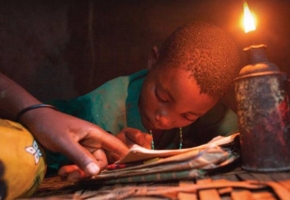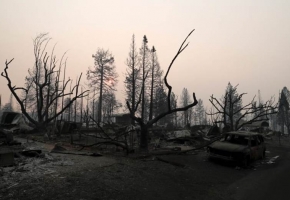Strange blobs in Earth’s mantle are relics of a massive collision

Scientists proposed a novel idea that could solve two of the world's mysteries at once – one that passes over our heads every night, and one that sits far below our feet.
The first mystery has puzzled everyone from scientists to inquisitive children for millennia: where did the moon come from?
The leading theory – known as the Giant Impact Hypothesis – is that the moon was created 4.5 billion years ago when a would-be planet the size of Mars smashed into the still-forming Earth.
This epic collision between early Earth and the proto-planet called Theia shot an enormous amount of debris into orbit, which formed what would become the moon. Or so the theory goes. Despite decades of effort, scientists have not been able to find any evidence of Theia's existence.
New U.S.-led research suggests they might have been looking in the wrong direction. Around 1,800 miles below Earth's surface, two massive "blobs" have baffled geologists since seismic waves revealed their existence in the 1980s.
These continent-sized clumps of material straddle the bottom of Earth's rocky mantle near its molten core, one below Africa and the other underneath the Pacific Ocean.
Scientists have determined that the blobs are much hotter and more dense than the surrounding rock, but much else about them remains a mystery.
The new research indicates the blobs are "buried relics" of Theia that entered into Earth during their formative collision – and have been hiding near our planet's heart ever since.
As well as creating the moon, this collision and the remnants it left behind may have helped Earth become the unique life-hosting planet it is today, the researchers proposed.
Source: Nature







